This site contains affiliate links. I may earn a small commission, at no extra cost to you.
If you’ve ever wondered how skincare brands Murad vs Dermalogica weigh up, or what I think about either brand, you’re reading the right blog post.
When I was in my teens I was swayed to purchase some Dermalogica products by a local salon. I remember how expensive they were (especially for an 18 year old with a part time job!) and how they dried the living hell out of my skin.
I simply told the aesthetician ‘I have acne’ and they gave me the oily skin range, despite having a dry skin type. This isn’t to say that Dermalogica is an inherently bad product line, but you do need to select the right things.
In this blog post I’ll compare the Dermalogica product line with Murad products, so you can choose the best option for your skin concern.
Dr Murad vs Jane Wurwand
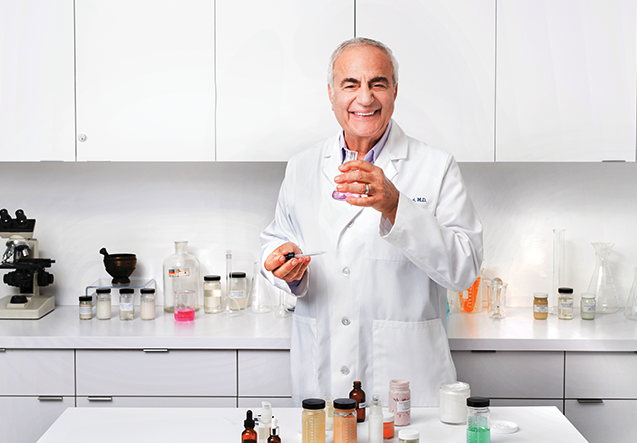
Both Murad and Dermalogica have given themselves a ‘clinical’ aesthetic. For me this is somewhat of a marketing technique that is designed to make people feel as though their products are superior.
Again, it doesn’t mean the products aren’t good, you just need to *not* fall for the aesthetic alone, as so many people do.
Murad’s heritage medicinal, founded by Dr Howard Murad who is a board certified dermatologist. On Murad’s website, they describe themselves as the ‘first modern doctor brand’. This is pioneering for sure, but again it doesn’t make the product superior.
All of the information I’m providing here is simply designed to help you see through any ‘medical grade’ language you might see.
Medical grade, like non-comedogenic, is a marketing term that doesn’t hold much real world value.
The only true ‘medical grade’ skincare out there is prescription-only skincare, but if it is available OTC then it is simply cosmetic skincare AKA regular skincare.

Conversely the Dermalogica founder, Jane Wurwand, is not a qualified dermatologist.
She is a skin therapist, and the brand went on to be used within in hundreds of thousands of aesthetician or ‘skin experts’ clinics.
Is a dermatologist-founded brand important?
In short, no it doesn’t make it inherently better than other brands.
For me, it’s all about the execution of the product, research and tasteful, credible marketing. There are plenty of non-dermatologist founded brands that have good product lines, such as Krave beauty or Simple skincare.
Murad skincare vs. Dermalogica skincare products for sensitive skin
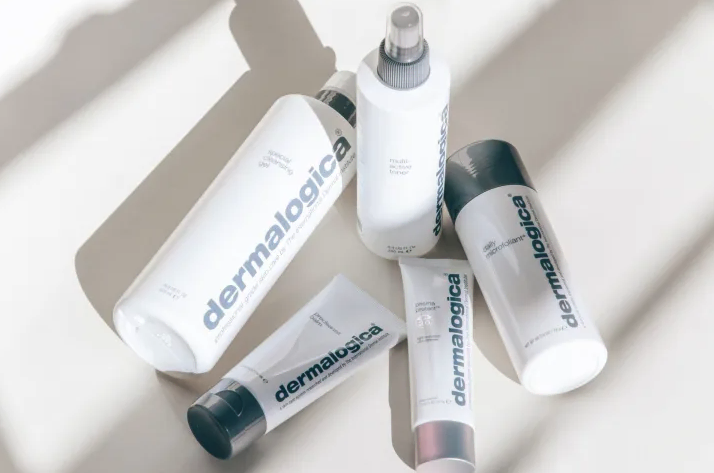
I’ll be honest, I’m not sure there is such a thing as as ‘perfect’ skincare range where I’d freely use any product from the range. Purito gets pretty close, and Dr Sam’s, but there are still some products I wouldn’t personally use.
When it comes to Murad vs Dermalogica, I notice that they both regularly include essential oils in their products.If you have sensitive skin, acne-prone or rosacea skin, I strongly recommend avoiding essential oils where you can.
Essential oils and added fragrance can cause skin irritation for nearly all of us. Even if you have normal skin without any sensitivities, I still recommend avoiding them – you’ll save yourself hassle in the long term.
When comparing product lines, you can avoid products that contain any of these:
- Limonene
- Linalool
- Parfum
- Fragrance
- XYZ essential oil
If you struggle to find these in a list, you can use a website like incidecoder.com to easily find them for you.
Clean beauty
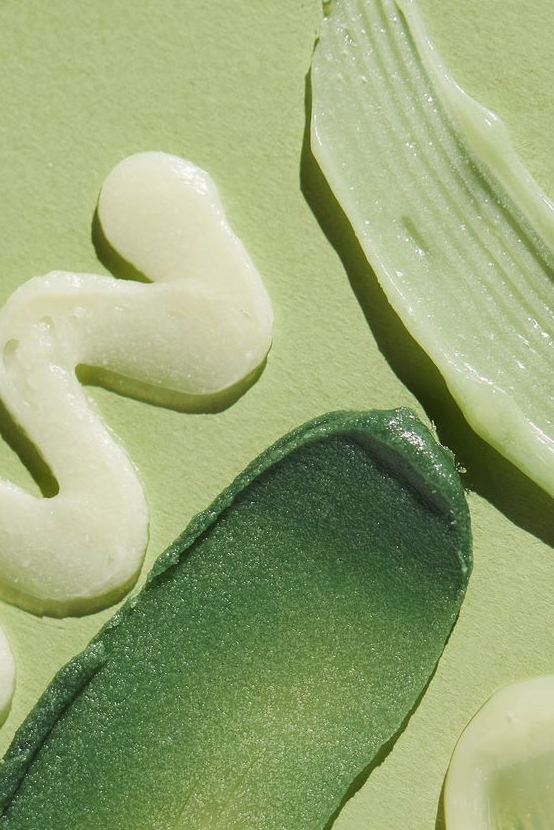
One noticeable difference when comparing Murad vs Dermalogica is the emphasis that Dermalogica places on clean beauty.
Like medical grade, clean beauty is an unregulated marketing term, designed to suggest products are superior than ‘dirty’ brands.
In reality, every brands definition of clean beauty is different, and they essentially just mould the term to fit around their products. For example, on Dermalogica’s website it says:
“We have been clean since 1986. Our formulas are free of artificial colours and fragrances, mineral oil, lanolin, S.D. alcohol, parabens and microplastics.”
In this case, Dermalogica is doing exactly what hundreds of other brands do: throwing perfectly fine ingredients into the list of ‘dirty’ ingredients, to make the brand appear premium.
Artificial vs natural fragrance
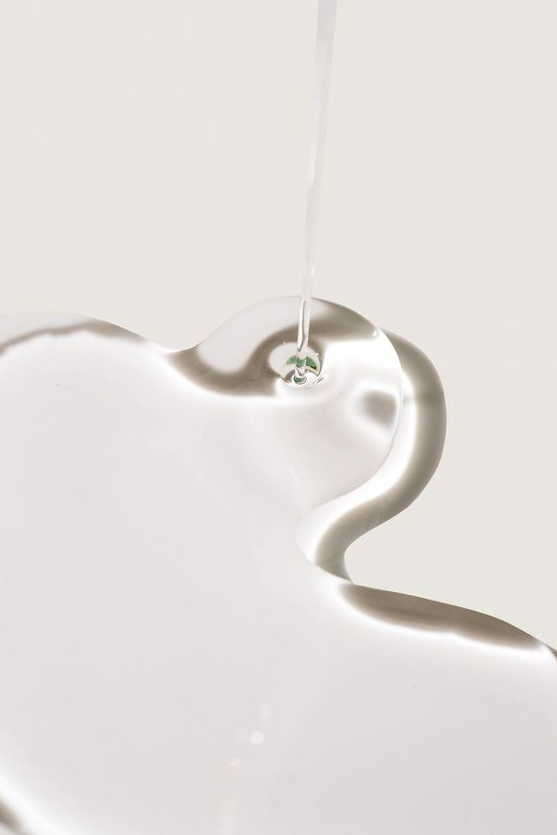
In reality, their products may not include ‘artificial’ fragrance but they do include natural fragrance – both are as bad as each other. There is also nothing inherently wrong with lanolin, for example.
Many brands do this, and you’ll find their list of ‘free from’ is simply determined by what they don’t currently have in their products. It’s very convenient.
The average consumer isn’t wise enough to know what’s ‘good and bad’, so they assume the list of things must be bad. In other words, they trust the brand.
You’ll see that Murad often do this. For example, their ‘formulated without’ section includes gluten – something that is wildly irrelevant for skincare, for most people.
Overall, I won’t be too mad with these brands for doing this, since it seems like the status quo of the industry. What I really care about is the product quality and formula, so let’s get into that now.
Murad vs Dermalogica: acne-prone skin products

Both brands have a large selection of products for acne-prone skin and acne scars. Dermalogica’s website easily splits them into teenage acne breakouts and adult acne breakouts, whereas on Murad’s website there is simply one category for adults.
It is a little easier to spot which products are for breakouts in Murad’s line, because of the blue themed packaging.
What I find disappointing about Murad’s acne range, is that 99% of the products contain both essential oils and fragrance.
This isn’t to say they won’t work, but I fail to see why you’d choose them over something else, especially as the products are very expensive.
Unfortunately a lot of Dermalogica’s products also contain essential oils and fragrance, but there are some products that don’t, and I feel look more promising.
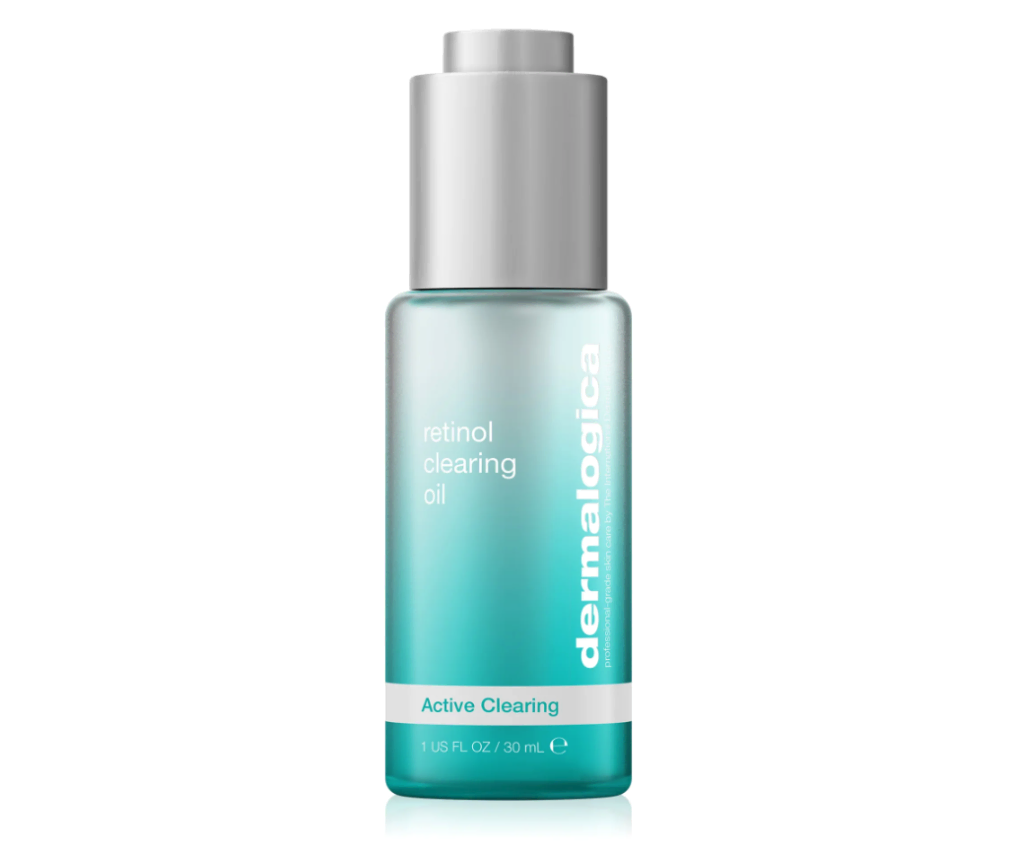
The Dermalogica retinol clearing oil is probably one from the range that I’d lean towards most. It has quite a minimal ingredients list, and utilises retinol which is a great for acne-like breakouts.
Murad vs Dermalogica: fine lines
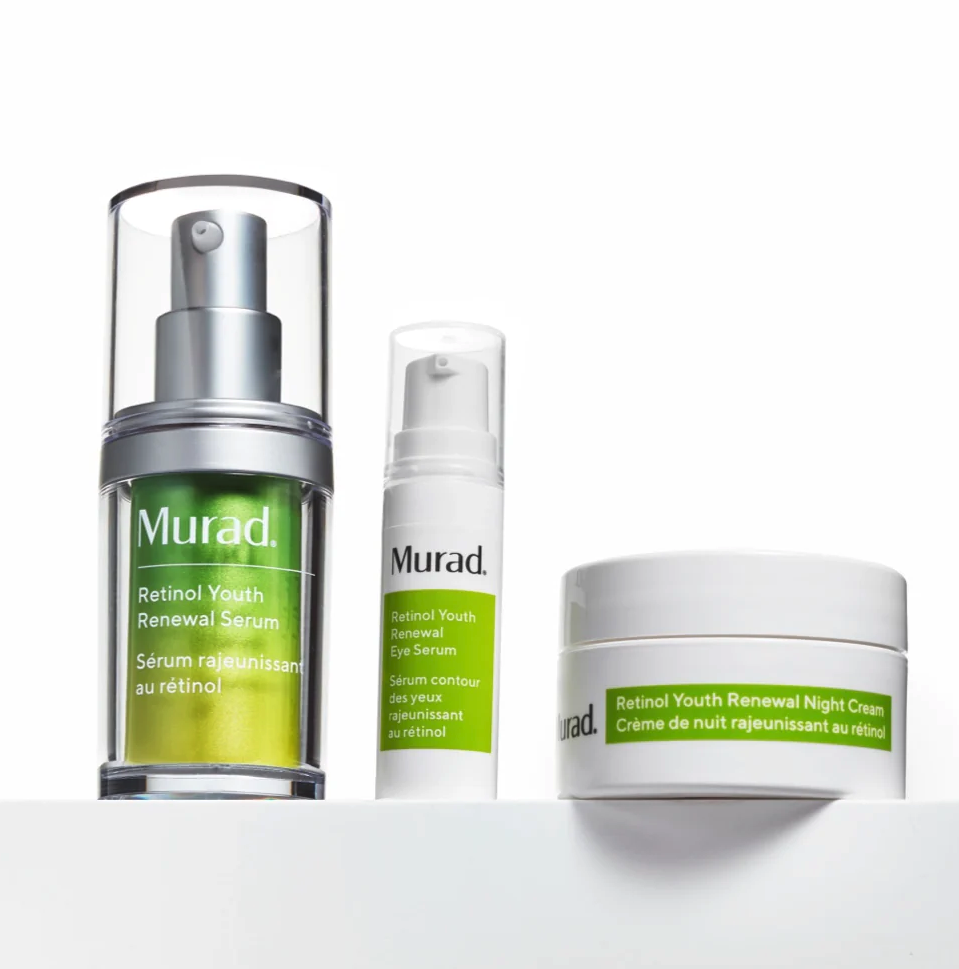
When targeting fine lines, Murad’s line is, again, a lot easier to decipher. They have used a green colour for all of their ‘Resurgence’ line.
In fact, most of their Resurgence line is made up of retinoids, which would actually be very beneficial for treating acne. Check out my favourite retinoids here.
Their acne line, which is a blue colour, contains a lot of salicylic acid. Whilst salicylic acid is helpful for acne, retinoids can often be even more helpful. If I had active acne again, I would choose a retinoid from the Murad Resurgence line.
Retinoids also help tonnes of other skin concerns, such as:
- Dark spots and age spots
- Evening out skin tone
- Brightening dull skin
- Fading acne scars
Dermalogica’s product selection for fine lines seems to be more focused on hyaluronic acid, AHAs vitamin C. Whilst active ingredients like glycolic acid can help mature skin a lot, I do find retinoids to be more effective all-rounders.
Murad vs Dermalogica: best vitamin C serum
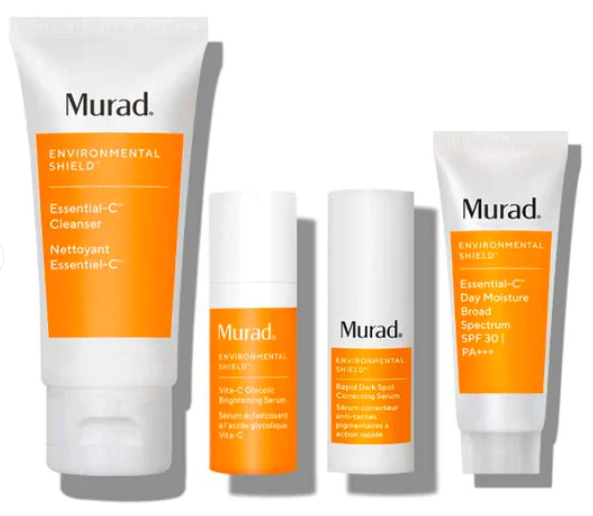
Personally I don’t use vitamin C because it just tends to irritate my skin and, with time, I find my skin is just weaker and weaker. I also agree with most dermatologists that, if you have active acne, it’s recommended to get that under control before introducing a vitamin C.
However, if you love vitamin C and want to compare Murad vs Dermalogica vitamin C, there are some interesting points of comparison.
Unsurprisingly, Murad’s vitamin C range is orange coloured. From this range, I would avoid any of the formulas that contain physical exfoliants, such as the Vita-C Triple Exfoliating Facial.
Vitamin C can be irritating at the best of times, so you definitely don’t want to mix it with a bunch of exfoliants, in my opinion.
Murad City Skin Age Defense Broad Spectrum SPF 50

I have used the super popular SPF, City Skin Age Defense Broad Spectrum SPF 50, and to be honest I didn’t love it.
I felt the peachy tone made my skin look a weird shade, and it irritated my eyes a lot. However, it is a very nice, thin texture, so I can see why people love it. I’ve compiled a list of sunscreens that are low risk for clog prone skin here.
Most of the range, again, include fragrance and essential oils, so I’m reluctant to pick out any favourites.
Both Dermalogica and Murad’s vitamin C range use a mixture of vitamin C derivatives such as l-ascorbic acid and aminopropyl ascorbyl phosphate.
Unfortunately I also found the Dermalogica range to have a bunch of essential oils which just … rub me up the wrong way, so I am refraining from recommending them.
Murad vs Dermalogica: ranking best sellers
To finish up, I’ll comment on some of the brands best sellers.
Murad’s clarifying cream cleanser
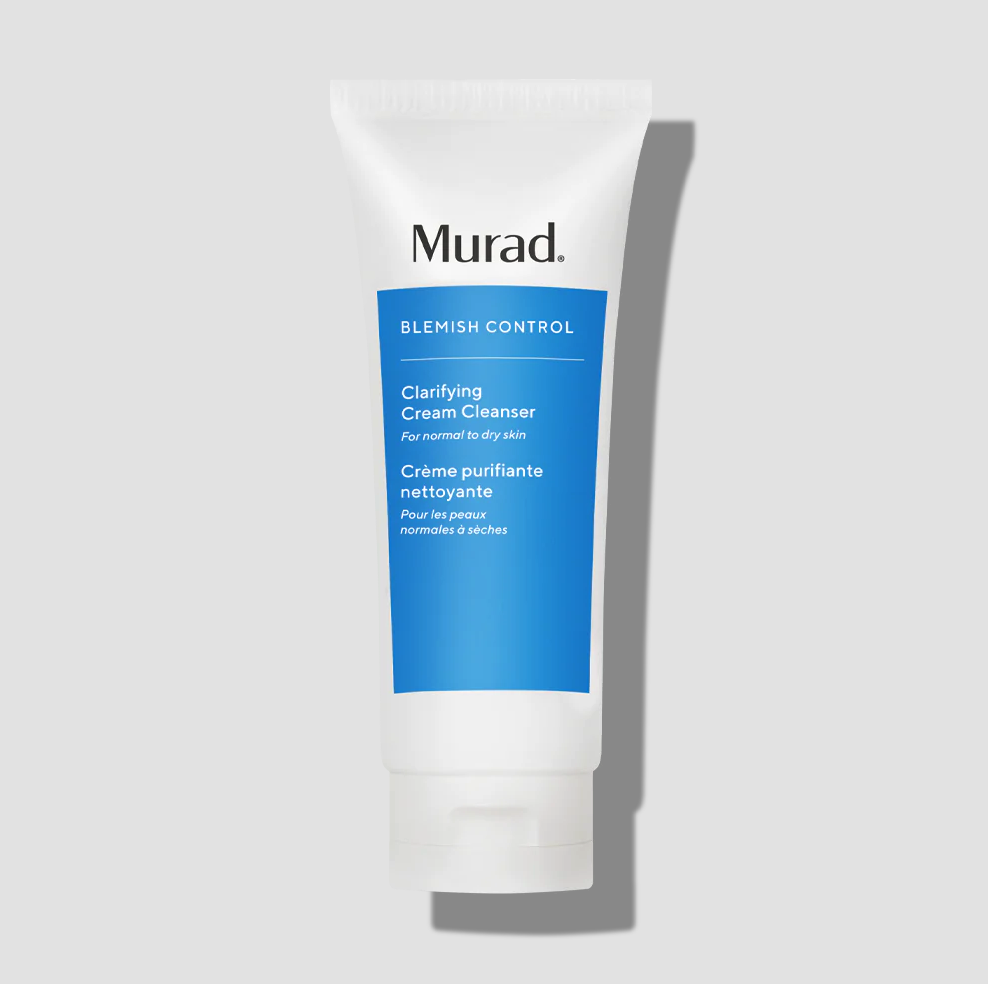
This is a cream cleanser targeted towards acne-prone skin. It includes a lot of beneficial active ingredients, such as salicylic acid, silver citrate and zinc.
Even though these ingredients are helpful towards acne, I do have concerns over the menthol, fragrance and tea tree oil.
If I’m honest, I think there are better cleansers out there for acne-prone skin. Check out my water-based cleanser recommendations.
Personally, I think it’s better to get your acne-fighting ingredients in leave-on products such as serums.
Using a cleanser with exfoliating actives twice per day can really really wear at your skin’s protective barrier.
Dermalogica dynamic skin recovery SPF 50 moisturiser
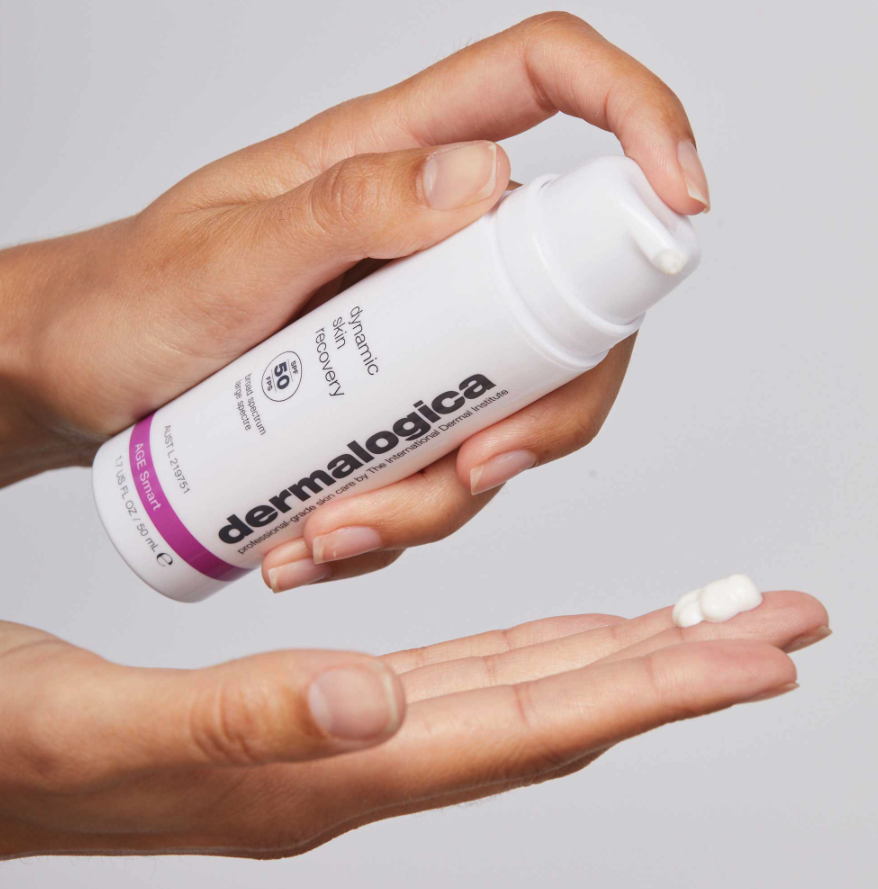
I can’t say I’m particularly impressed with this SPF, it’s everything I try to avoid as someone with sensitive skin. Chronically packed with essential oils, it must smell a lot!
Obviously I haven’t used this myself, but it doesn’t appeal. I can see why this would be suitable for someone with mature skin, who is interested in fragranced products.
It uses a range of different chemical sunscreen filters to create the SPF 50 claim, plus some skin plumping/soothing ingredients. Overall, it is not something I’d reach for or recommend.
So… Murad vs Dermalogica skincare: which is best?
Personally I sway a little more towards Murad. For me, the products just make more sense and, despite containing ingredients I don’t like, they also have some which don’t contain those.
This doesn’t make Murad my favourite brand, but I’m not shut off from any of their future products. I base my views on a product-by-product basis, because brands are always going through evolutions, reformulating and rebranding.
The best example of this is T-Zone, whose products used to be incredibly harsh. However lately, I have been really impressed by their new Cica line – anything is possible!
This was Murad vs Dermalogica Skincare: Which is Best?
You may also like:
- Simple Skincare Refreshing & Moisturizing Face Wash Review
- Vanicream Gentle Facial Cleanser Vs Cetaphil Cleansers
- What’s the Difference: Cerave Retinol Serum vs Skin Renewing